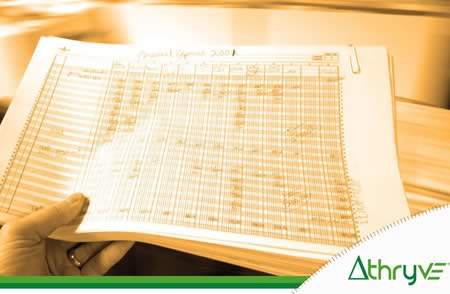Data is all about visibility. If you cannot see and interact with data, then it has no value. This is why we are excited about data because we have so much more visibility. Big data is changing how we see things. Unfortunately, one of the great data tools is becoming one of the great interpretation barriers.
Today, an estimated billion people use Excel and other spreadsheet applications. This is not a surprise at all, since outside of e-mail and word processors, it is hard to imagine any software that has more appeal during our working days, says Riaan Bekker, Force solutions manager at thryve.
In a way, spreadsheets are the manifestation of humanity’s oldest ways of calculating information. When the first ancient civilisations developed letters and numbers, their goal was to record transactions. Trading nations were among the first to establish written languages, and today’s alphabet is largely derived from them. The concept of creating tables of data to reflect information is possibly as old as writing itself.
That eventually evolved into paper ledgers and then the spreadsheet. Today, the concept is still very powerful and useful. This article is not a call to stop using spreadsheets. But, we really need to cease making them our central way to reference data.
Yet many companies do. According to Forbes, one out of five companies still relies on spreadsheets as their main data communication tool. Even those that rely on something else remain deeply dependent on spreadsheets. This is fine for transactions of a certain level. But, when dealing with governance, risk and compliance (GRC), incident and claims registers, renewal exposure gathering or risk audits, to name a few examples, spreadsheets have several drawbacks:
- They are not easy to understand. People who use spreadsheets every day tend to have a good understanding of what they represent. But, for other employees, and this is often the majority of a company, spreadsheets are cryptic and overwhelming. They are far removed from the modern visualisation tools used to illuminate today’s data insights.
- They don’t sync. In the risk world, it is important to have a single truth. How else can a business believe the strategic decisions it takes are consistent? But, every spreadsheet tends to have a unique author, and that means each will have unique differences. Collating that data into one source is a big challenge and often dropped on the shoulders of risk managers. It is a painful manual exercise that is still prone to errors.
- They don’t keep historical information. It takes surprisingly little for a spreadsheet to become very large and overwhelming. One way we get around this is to update the data itself. But that leaves no scope for historical data, which is effectively wiped away with every edit. You could maintain multiple versions of a spreadsheet, but this becomes very difficult to manage.
- They don’t offer a chain of evidence. Risk and strategy are both based on insights from the business environment. They need to be justified and receive buy-in: a business that just takes risk management activities at face value is bound for trouble. But, such certainty requires a chain of evidence to put clout behind a choice. This point links to the problems with historical information and different versions of the truth. Spreadsheets are not good at maintaining a legacy of information and thus a chain of evidence.
Today, there are many data visualisation tools that can be used in conjunction with spreadsheets. But those only solve one of the above four problems. To really create a coherent view of data, both historical and predictive, a business needs a central platform that aggregates and integrates different data sources.
This is what we accomplish with Riskonnect. Instead of banishing spreadsheets or forcing everyone to sing from the same hymn book, Riskonnect lets companies bring all those elements together and create a single truth for risk management that is easy to interpret and handle. It removes spreadsheets from being the centre of data management strategies, yet allows them to stay in the hands of specialists.
The alternative is to simply stick to spreadsheets. But, these are woefully under-equipped to deal with today’s information demands. Relying on spreadsheets to manage your company’s information needs is incredibly risky. In fact, it’s a sure route to disaster and blunts your competitive edge. Imagine compiling compliance information with different spreadsheets, while rival companies effortlessly produce the same information through their risk aggregation platform?
Spreadsheets aren’t dead and don’t need to be banished. But the central information needs of companies, especially in the risk management world, have outgrown them. Don’t let your company stagnate under a mountain of columns and cells. Find out what GRC aggregation platforms such as Riskonnect can do to bring consistency, efficiency and reliability back into your risk management.




